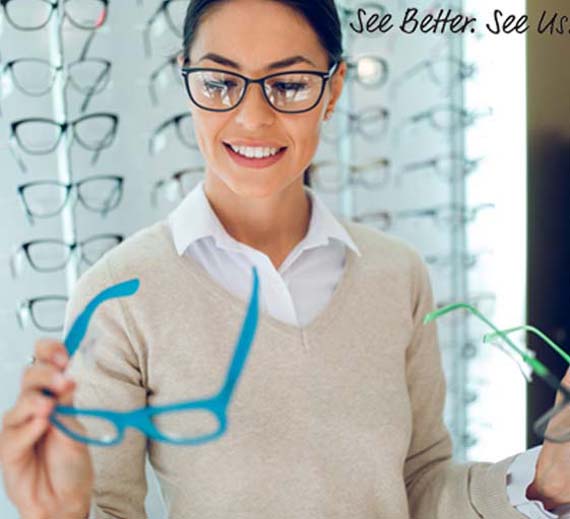What are the REAL differences?
When near vision begins to decrease people often reach for an off-the-shelf pair of magnifiers or reading glasses to sharpen things up. These readily available and cheap glasses may seem like a great choice, but what are the real differences between magnifiers and properly prescribed near glasses?
First, it is important to ask: “Why is my near vision getting worse?”
Off the shelf reading glasses are designed solely to assist people with Presbyopia. Presbyopia is a normal ageing process of the lenses inside our eyes, which starts around the age of 45 for most people. As we age, these lenses lose flexibility and cause our clear near focal point to slide back – further from the eye. We initially notice near blur, which seems better if we hold things further away. Trying to focus without the aid of glasses puts a lot of stress on the muscles around our lenses, leading to headache, fatigue, and eyestrain. This is when many people start to require near vision correction.
There are many other vision and eye health issues that can also cause decreases in near vision, so any new vision changes should be fully assessed by your optometrist. Your optometrist will discuss all the suitable vision correction options and ensure any eye health problems are managed.
My optometrist tells me I have Presbyopia and I need near glasses. Can I use off-the-shelf magnifiers?
There are many differences between prescription near glasses and magnifiers:
- All off-the-shelf magnifiers have the same power in both lenses, which is a spherical positive powered lens (i.e. +1.00, +2.00). Most people do not have the same glasses prescription in both eyes, which means one eye ends up being overcorrected or uncorrected in magnifiers. This makes it hard for our eyes to work properly together and can cause unnecessary eyestrain.
- Magnifiers don’t correct for astigmatism. Astigmatism is a common type of refractive error that is corrected for in prescription glasses. It affects all distances and causes blur, distortion and glare. Studies have shown ~32% of all people and ~67% of individuals over 65 have astigmatism. Astigmatism correction is needed to achieve best corrected vision, so these people cannot properly correct their vision with magnifiers.
- Lens and frame quality are typically lower in magnifiers. There is a wide range of lens and frame qualities in both off-the-shelf and prescription glasses. Even prescription glasses can be made with poor quality frames and lenses, so it is important to discuss with your optometrist what materials, coatings, etc are being used in your glasses. At Wodonga Eyecare we only use high quality frames and Zeiss lenses, with warranties to back up our products. Anti-glare and scratch-resistant coatings are available, which allow for better vision and longer lasting lenses. These coatings are not typically used on ready-made readers.
- Frame fit and lens centration matter! Every lens has an optical centre where vision is best. When glasses are properly fitted these centres are positioned based on the position of your pupils in your chosen frame. If a lens is decentred horizontally or vertically it can induce a prismatic effect which stresses eye muscles and can lead to visual discomfort. This becomes more of an issue with increasing lens power (i.e +3.00 and up)
Magnifiers work really well for some people and certain tasks!
An individual who has had an eye exam and is found to have normal age-related presbyopia with equal prescriptions in both eyes and no astigmatism, may cope really well with magnifiers as a vision correction solution. If the frame fits well and their eyes are nicely centred in the lenses, they may have no issues at all. This works well for individuals who work in industries where their glasses get damaged or broken a lot and therefore, they choose not to invest in better quality frames and lenses.
In other cases, magnifiers may be a reasonable option as a cheap back-up pair of glasses for occasional use. For example, Tony may have a slightly different prescription in both eyes but doesn’t feel any eyestrain or headache when using his magnifiers for short periods. He decides to get a good pair of prescription near glasses to use when he’s reading for long periods or working on his laptop or mobile phone but has a couple pairs of magnifiers he throws on for quick near tasks in the kitchen or in the shed. In this way, he is properly supporting his eyes for visually demanding tasks, and keeping his good glasses safe!
There are lots of near vision correction options to suit the lifestyle of every individual (even contact lenses!). The best way to know what is right for your eyes is to have a thorough examination and discussion with your optometrist and your optical dispenser. We are always here to help!






